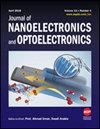Advances in Nanopore and Photoelectron-Based High-Throughput Sequencing Technology for Single-Molecule Sequencing
IF 0.6
4区 工程技术
Q4 ENGINEERING, ELECTRICAL & ELECTRONIC
引用次数: 0
Abstract
Next-Generation sequencing is a widespread technology of sequencing which is used in genomics research and biotechnology, although it comes with many shortcomings such as short read length or polymerase chain reactions (PCR) bias. In this review, a brief introduction is provided to the Helicos Biosciences true single-molecule sequencing (tSMS), Pacific Biosciences single-molecule real-time (SMRT) sequencing and Oxford Nanopore single-molecule sequencing technologies. In comparison with both first- and second-generation sequencing technologies, third-generation sequencing such as nanopore and photoelectron high-throughput sequencing technologies have the advantages of ultra-long read length and no PCR bias, which help to study repetitive regions of the genome and complex structural variants, thus correctly identifying potential gene mutations in various diseases, and are important for diagnosis and treatment of various diseases. This paper focuses on the sequencing principles of nanopore and photoelectron high-throughput sequencing technologies as well as their applications in cancer, pathogen detection and genetic diseases.基于纳米孔和光电子的单分子高通量测序技术研究进展
下一代测序是一种广泛应用于基因组学研究和生物技术的测序技术,尽管它有许多缺点,如读取长度短或聚合酶链式反应(PCR)偏差。在这篇综述中,简要介绍了Helicos Biosciences真实单分子测序(tSMS)、Pacific Biosciences单分子实时测序(SMRT)和Oxford Nanopore单分子测序技术。与第一代和第二代测序技术相比,第三代测序技术如纳米孔和光电子高通量测序技术具有超长读取长度和无PCR偏差的优势,有助于研究基因组的重复区域和复杂的结构变体,从而正确识别各种疾病中潜在的基因突变,对各种疾病的诊断和治疗具有重要意义。本文重点介绍了纳米孔和光电子高通量测序技术的测序原理及其在癌症、病原体检测和遗传病等方面的应用。
本文章由计算机程序翻译,如有差异,请以英文原文为准。
求助全文
约1分钟内获得全文
求助全文
来源期刊

Journal of Nanoelectronics and Optoelectronics
工程技术-工程:电子与电气
自引率
16.70%
发文量
48
审稿时长
12.5 months
 求助内容:
求助内容: 应助结果提醒方式:
应助结果提醒方式:


